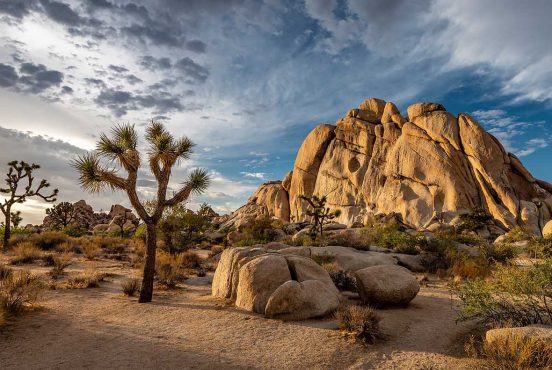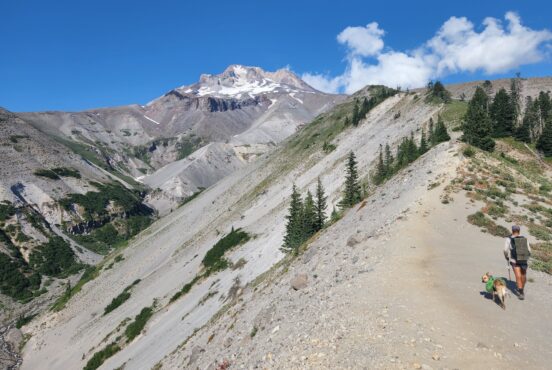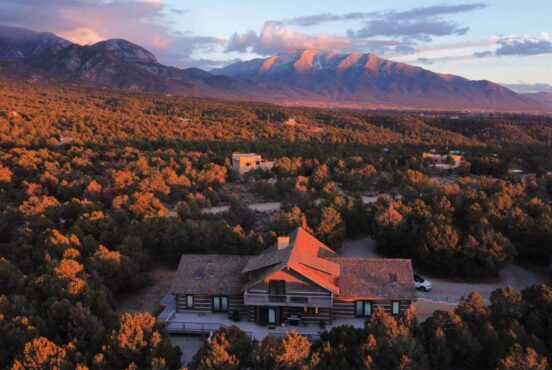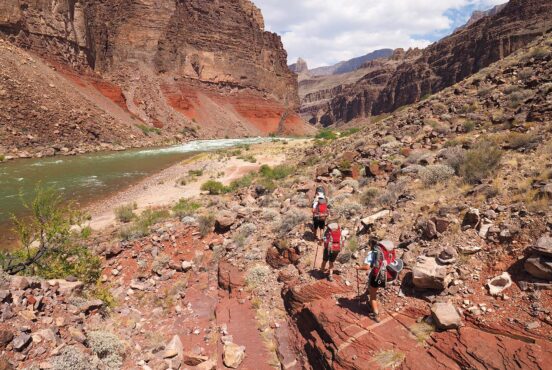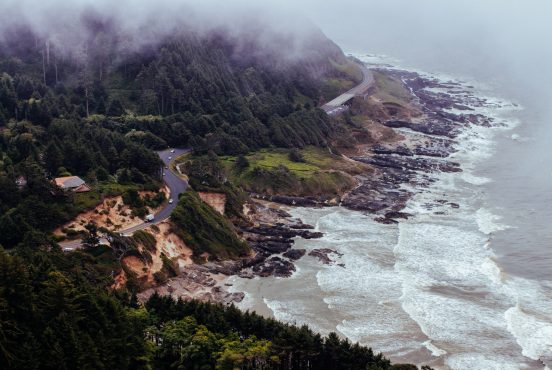Alaska, often referred to as The Great North, is famous for its thousands-strong herds of migrating caribou, salmon swimming triumphantly upstream, calving tidewater glaciers, and breathtaking snow-capped mountains.
It’s a state that’s home to eight national parks–second only to California in number–of which only three are accessible by passenger car. The rest? Well, you’ll have to book a bush plane or a boat trip and find out.
Because of its far north location, the window for traveling to Alaska’s parks is short, generally June through September, and visitors will typically pay a premium for this prime weather window. Book early and plan ahead, as many necessary lodging, glamping, and transportation services sell out quickly.
For intrepid adventurers who feel that a simple road trip to Yosemite is a snooze and who’d rather spend their summer gazing at grizzly bears, climbing glaciers, and hiking through vast, untrammeled tundra, the Alaska parks are heaven. Read on for our guide to what to do in each of them. Oh, and don’t forget the bear spray.
Related Read: 8 of the Most Beautiful National Parks in the U.S.
1. Denali National Park

Denali means “The High One” in the Native Koyukon language, and as a national park, it’s the most popular of the bunch in The Great North. It’s also one of the crown jewels of the entire National Park System, with the tallest peak in North America, numerous braided glacial rivers, and dozens of species of unique flora and fauna all within its boundaries.
Because of the 89-mile park road that stretches from Denali’s highway entrance station all the way to the mining town and roadhouse of Kantishna, it’s one of the best parks in the state for road-tripping travelers, due to its easy access and availability of hiking trails of varying lengths and difficulty levels. Be advised, though, most visitors in private vehicles can only travel to mile 15 on the main road, unless they have camping reservations beyond that.
Because of this limited access, guests here need to book one of the delightfully green transit buses or tan tour buses that meander up and down Denali’s winding road. The transit buses are just what they sound like–breezy school buses that get intrepid travelers from point A to point B, based on the marked shuttle stops along the road. The narrated tour buses are much more elaborate affairs, with a certified naturalist guide explaining the history, geology, and wildlife you’ll see along the route. It’s a bit like an African safari, only the “big 5” you’re after are grizzly bears, Dall sheep, caribou, moose, and wolves.
Once you’ve gotten yourself inside the park proper, there are a multitude of activities for any outdoor lover. Hike the 4-mile Savage Alpine Trail if you’re seeking spectacular views and a craggy, mountainous environment, or opt for a more mellow stroll among the carpet of unique tundra plants on the Tundra Loop, near Eielson Visitor Center.
2. Kenai Fjords National Park

Another of Alaska’s “easy access” drive-in parks, Kenai Fjords offers much of the wild Alaskan experience that Denali can’t — nesting seabirds, migrating humpbacks, and glaciers calving dramatically into the sea.
This coastal national park is situated near the funky town of Seward, and it centers around the Harding Icefield, a massive span of ancient frozen water that’s roughly the size of Maui. From here, Kenai’s notorious tongues of glacial ice spill out towards the mountains and ocean. One of the best ways to see them up-close is on a guided all-day kayaking adventure out to the Aialik Glacier with Kayaking Adventures Worldwide. Along the way, you might spot threatened Steller sea lions, breeching humpback whales, and high-flying puffins.
There are also loads more mellow wildlife and whale-watching boat tours that venture into Kenai Fjords, for travelers who’d rather sit back and enjoy a scenic cruise. Kenai Fjords Tours offers a 6-hour trip guided by a park ranger or visitors can opt for a 7-hour excursion into the park’s gorgeous and less-trammeled northwestern fjords.
If you’re looking for a more land-based adventure, this park is one of the few in Alaska that has trail access, as opposed to high-intensity off-trail rambling. Trekkers who want a relaxed stroll should check out the 2.2-mile loop trail to the Exit Glacier Overlook, but adventurers who want to feel the leg burn and get in their steps won’t want to miss the 8.2-mile, all-day Harding Icefield Trail, featuring truly jaw-dropping views of the Exit Glacier, brilliant fuchsia fireweed, the spectacular Harding Icefield, and, if you’re lucky, a marmot or two.
Related Read: 10 Best Hikes Near Anchorage, Alaska for an Epic Day in Nature
3. Wrangell-St. Elias National Park
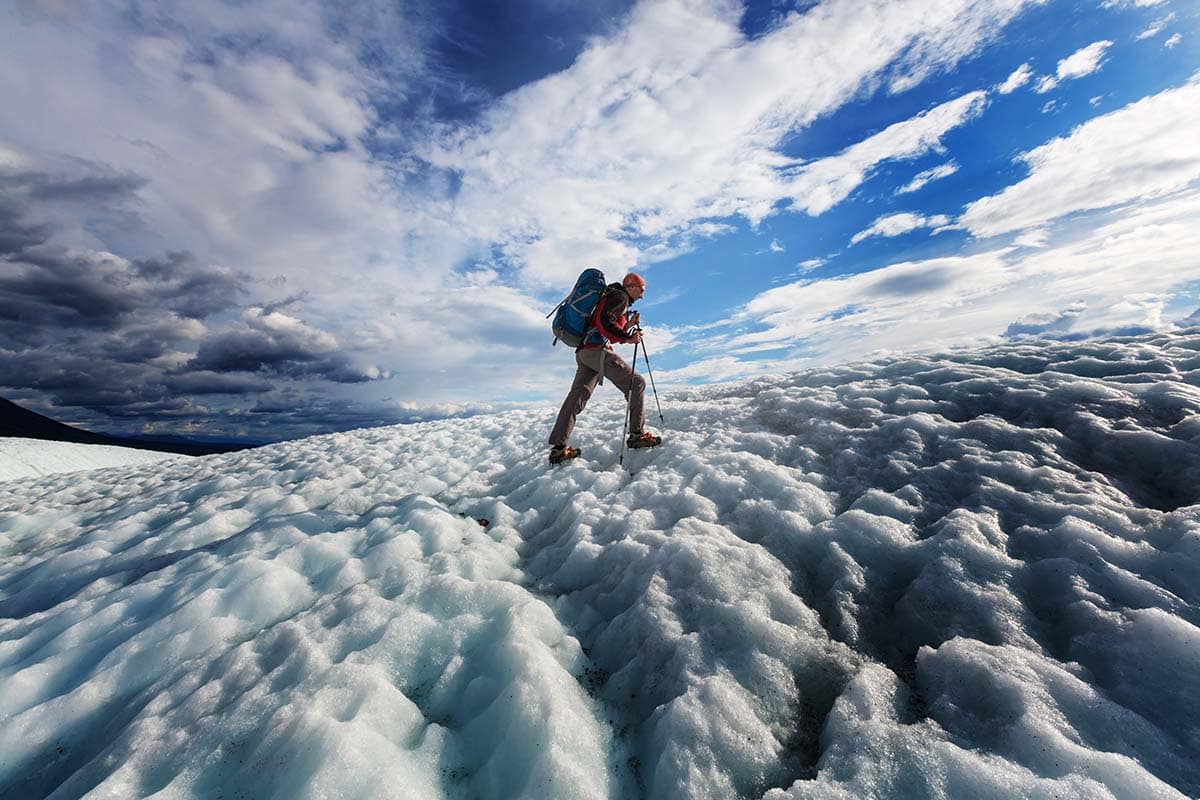
If you’re the kind of road tripper who likes getting so far off the beaten path that you’re navigating miles upon miles of tree-strewn wilderness on a bumpy washboard road, then Wrangell-St. Elias is the park for you.
First of all, it’s the largest national park in the United States and home to many of its highest summits, including 18,808-foot Mount Saint Elias. But that doesn’t mean you have to don a helmet and grab an ice axe to enjoy this storied park. The NPS maintains a series of trails near the historic copper mining town of Kennecott, from the mostly flat 4-mile trek along the Root Glacier to the leg-busting Bonanza Mine Trail that curves through the mountainous landscape for 3,800 vertical feet before ending at some seriously epic mining ruins.
Itching to get out on a glacier? St. Elias Alpine Guides has a bevy of glacier-treks for beginner to more advanced climbers. They’ll happily help walk you through anything from merely hiking around on the Root Glacier to more intense fare like ice climbing and ice cave exploration.
Like with many Alaska parks, the fun and recreation don’t stop there. With its miles of unspoiled wilderness and plethora of sky-high mountains to choose from, the park is also a mecca for mountaineers and backpackers. Plus, people hoping to get really far into the woods can even fly deeper in and packraft the Nizina River.
4. Glacier Bay National Park

Okay, we’re now moving on to Alaska’s non-drivable parks, and there’s no finer one to start with than the infamous Glacier Bay. This is likely the park you think of when you picture towering hunks of cerulean glacier ice plummeting into the ocean, famed perfectly by a breeching humpback whale.
Though Glacier Bay is a bit trickier to get to than the aforementioned parks, a host of licensed park concessioners are available to take visitors on guided boat trips to see the incredible glaciers and marine wildlife for themselves. Most leave from the tiny town of Gustavus, with a national park ranger on board to help travelers spot wildlife and provide commentary on the majestic scenery all around.
The park is also, surprisingly, one of the best parks in the country to visit by vacation cruise, due to its phenomenal water access. Established lines like Seabourn are licensed to enter into the park so that guests can experience all the wonder of a smaller boat tour from the comfort of the deck or their very own stateroom.
Lastly, flightseeing is an adrenaline-pumping way to check out the park if you’re short on time. Nestled in the artsy enclave of Haines, Alaska, Mountain Flying Service has been operating excellent plane tours of Glacier Bay for 30 years, taking visitors into both the east and west arms of the park.
5. Lake Clark National Park

As the ancestral homelands of the Dena’ina People, Lake Clark has a wealth of human history behind its stunning landscape. It’s also home to the headwaters of the largest sockeye salmon fishery in the world, plus its enormous namesake turquoise lake that provides prime paddling, backcountry camping, and angling opportunities.
One of the most popular expeditions in Lake Clark National Park doesn’t center around its most famous lake at all, though. Rather, it’s a multi-day backpacking traverse from Turquoise Lake to Twin Lakes, requiring a bush plane and a hearty sense of adventure.
There are also tons of great things to do in the teensy town of Port Alsworth that hosts the park’s only official airstrip, a food truck, and a gaggle of homes and cabins, for Alaska travelers who’d rather sit back and enjoy the bright blue water. Tulchina Adventures rents out both a cabin and several platform tent camping sites, plus their kayak rental and boat taxi service make it easy to plan a day paddle around the islets and streams that make Lake Clark so magical.
Hikers will absolutely adore the 5.5-mile jaunt up to neighboring Kontrashibuna Lake, which leaves right from the town of Port Alsworth and meanders through lush boreal forest, passing roaring Tanalian Falls on the way.
Related Read: 9 Epic Glamping Sites Near Yellowstone National Park
6. Katmai National Park

Few travelers make it out to Katmai each year, as the journey requires a teeth-gritting float plane flight and in-park lodging is limited. But, for those willing to brave a water landing in a tiny airplane, some of the best bear viewing in the country awaits.
First off, book a room at Brooks Lodge or the park’s campground (unless you’d rather jet out on a long and flight-heavy day trip), then, one you’ve settled into your home for the next few days, take the easy 3-mile (round trip) trail out to Brooks Falls. This magnificent waterfall is an epic spot to watch hungry grizzlies jockey for position as they lunge and snap at salmon valiantly swimming upstream. Be sure to bring your camera for this once-in-a-lifetime experience.
Katmai is also well-known as one of the best places in the world for sport fishing. Not only are the salmon abundant, it’s an excellent spot to cast your line for rainbow trout and arctic char, and a multitude of outfitters offer drool-worthy fishing trips for adventurous anglers.
If you’re staying in the park for multiple days, be sure to grab tickets for the Valley of Ten Thousand Smokes day tour, which winds through an impressive volcanic valley that was changed forever when the largest volcanic eruption of the 20th century took place in 1912, blowing the top off Mount Katmai.
7. Gates of the Arctic National Park
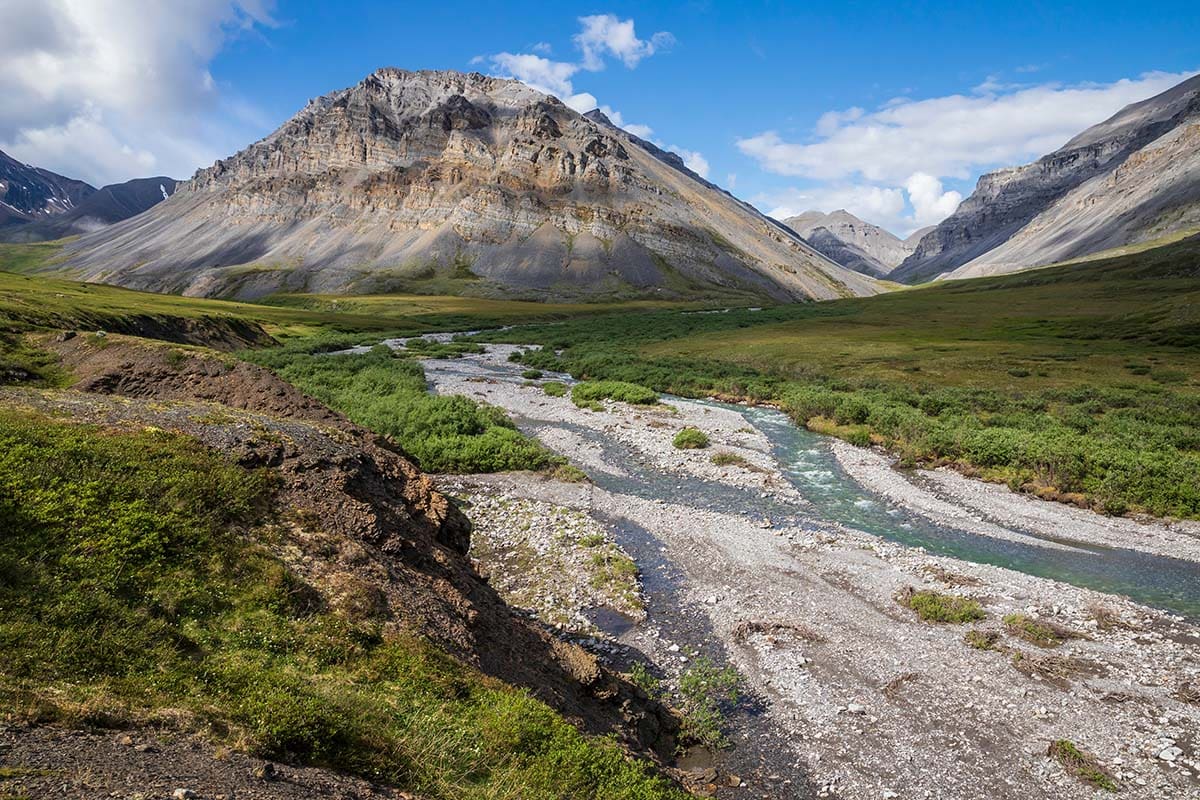
This far-flung national park is easily one of the most beautiful in the United States, with the towering Brooks Range spanning for hundreds of miles and opportunities to see northern animals like caribou, grizzlies, and muskoxen in abundant supply.
Gates of the Arctic is just what it sounds like–a jaw-dropping mountainous park that sets as a sort-of geological boundary high up in the Arctic Circle. It is unspoiled wilderness at its finest. Off-trail backcountry excursions, day-long flightseeing tours, and multi-day rafting and canoeing expeditions are what’s on the menu at this far-north park.
For those who’d like to spend many days backpacking through Gates of the Arctic, there’s no better trip than a guided hike with Alaska Alpine Adventures to the Arrigetch Peaks. Translating to “Fingers of the Outstretched Hand” in the Inupiat language, these imposing granite peaks soar above the tundra and streams below, and hikers will feel like they’re voyaging through Middle Earth on this off the beaten path trek.
Exploring via river is a more relaxed way to enjoy Gate of the Arctic, and many experienced companies like Arctic Wild offer excellent rafting and canoe trips down glacially-fed flows like the Noatak.
8. Kobuk Valley National Park
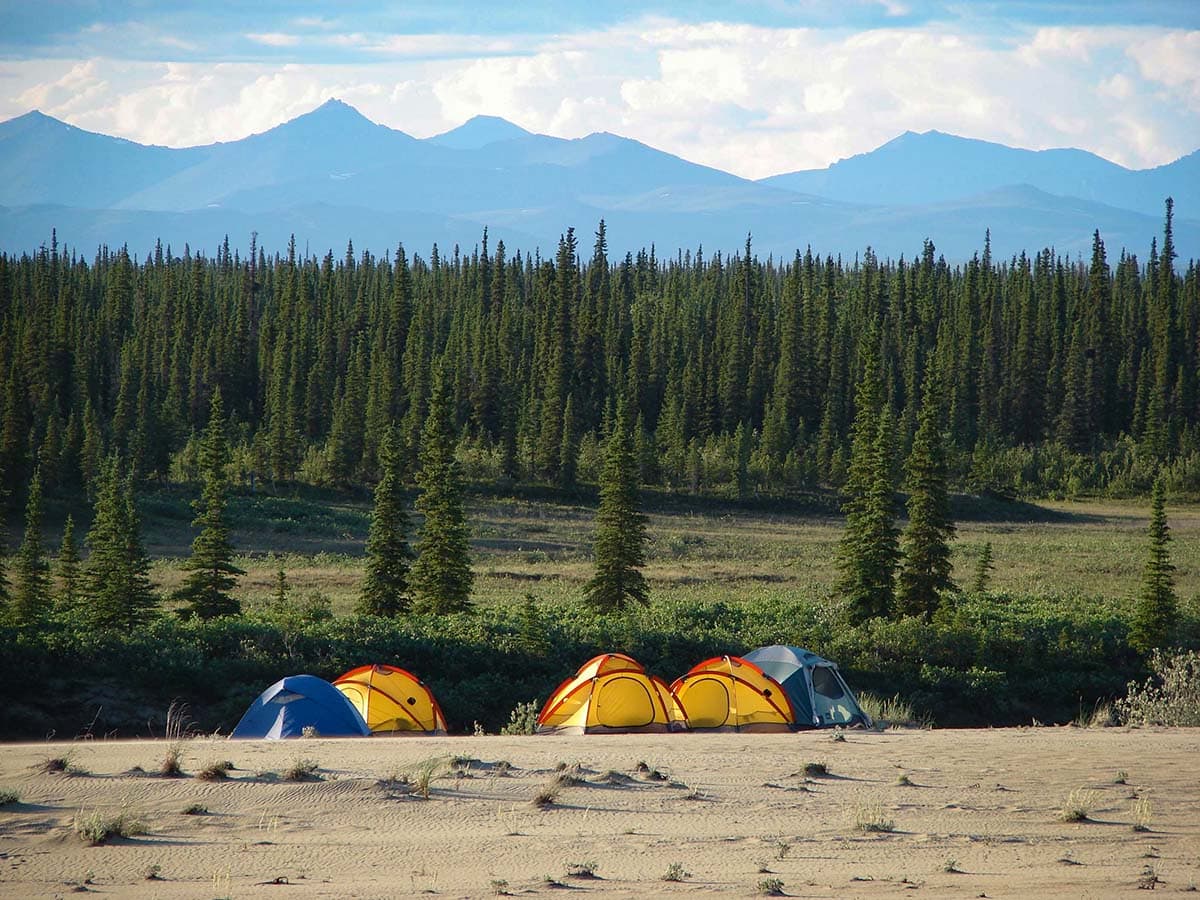
One of the least-visited parks in the entire system, Kobuk Valley is a haven for anyone who loves the Great North and wants to experience the solitude and silence that only miles upon miles of pristine wilderness can provide.
Home to migrating caribou, excellent backcountry fishing opportunities, as well as a series of impressive (although a bit confounding) sand dunes, this far-flung national park lies entirely above the Arctic Circle.
Because it’s so difficult to get to, most visitors to Kobuk Valley opt for a simple flightseeing tour or a night or two of camping on the Great Kobuk Sand Dunes, where a bush plane can land easily and hikers are free to frolic and tumble across the park’s 30 square miles of glacially-created, honey-colored dunes. The dunes are a relic from the last ice age, when glaciers retreated and fierce winds blew tons of ground-down rock into dunes south of the Kobuk River.
Numerous flightseeing companies are also at the ready to bring visitors into this spectacular wild expanse for a short day excursion, and they typically leave from Fairbanks, Coldfoot, and Kotzebue.
Explore Your National Parks
Get epic travel ideas delivered to your inbox with Weekend Wanderer, our newsletter inspiring thousands of readers every week.
Seen in: Alaska, National Parks, West



